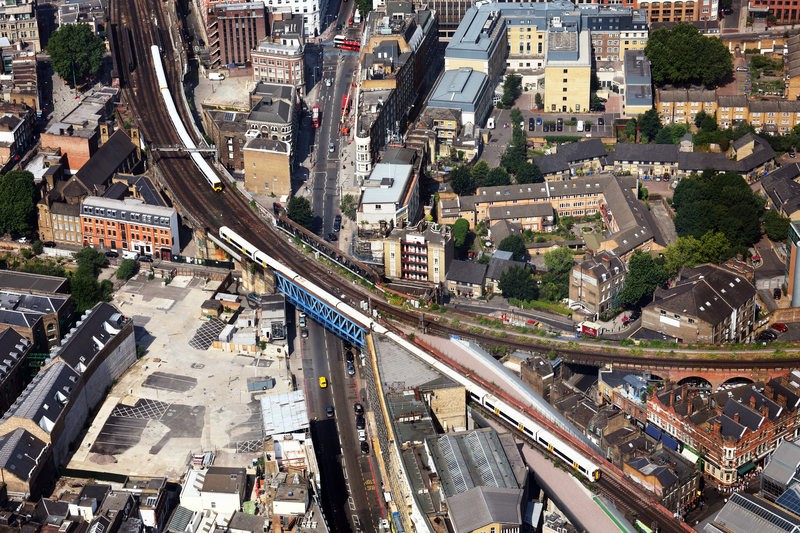Transport networks – including public transit, private vehicles, freight and taxis – are a fundamental component of any major city. Chris Shannon, CEO, Fotech Solutions discusses the need to improve transport infrastructure for cities today rather than in the future
Effective and reliable traffic flows will be essential for the sustainability and future economic growth of cities. The annual cost of congestion equates to $461 billion in the US, UK and Germany alone already. Unfortunately, forecasts suggest that traffic congestion is set to worsen by 2030, with the average British driver predicted to be stuck in 136 hours of traffic a year \(over 18 working days). The efficiency of these networks impacts citizens, businesses, the environment (the current transport sector contributes 27% of energy-related CO2 emissions) and the economy alike.
Implementing intelligent traffic management systems that deal with congestion detection and avoidance — as well as real-time public transport management, autonomous vehicle tracking, emergency management, car safety, accident prevention and pollution mitigation — are vital to keeping the cities of the future moving.
Transport management systems feeling the strain
The past 20 years has seen an 84% increase in the number of cars sold in the world. This fact alone helps to highlight the pressure transport networks are under today – and existing traffic management systems are beginning to show the strain.
Our current traffic systems will struggle to handle such an increase in vehicles. With more vehicles than ever competing for road space, accidents, traffic jams and road maintenance work are likely to rise. The problem is that current systems rely on pre-programmed flows and when these flows have disrupted the consequences can be extremely challenging to deal with.
What is needed is a new approach. One built to keep our transport systems moving by providing dynamic responses to incidents in real-time. The answer may just come from an unlikely place: our cities’ fibre optic cable networks.
A new way to monitor traffic flows
Fibre networks offer two key advantages over other potential smart transport technologies. Firstly, fibre optic cables already offer almost blanket coverage of cities and road infrastructures. Secondly, they are already in place. Making use of existing fibre networks means there is no need to dig up the streets, install new cameras, or fit point sensors. This has the added benefit of removing the need for vast spending programmes to deploy new technology.
The obvious question is, how can fibre optic cables possibly be used to monitor traffic flows?
The key is that all traffic generates acoustic or seismic data as it passes over roads. Crucially, certain activities and incidents produce specific acoustic signatures. These acoustic variations and vibrations distort the light passing through fibre cables. Combining cutting-edge photonics, AI and edge computing, new sophisticated distributed acoustic sensing (DAS) platforms can interpret this acoustic data to recognise, detect and track these signatures – enabling real-time monitoring of traffic flows and public transport infrastructure.
With these DAS platforms city authorities can analyse the speed and density of traffic, pinpoint congestion and identify disruptions like broken-down vehicles in real-time. More importantly, it also means that cities can make dynamic adjustments to transport infrastructure that will be required to keep cities moving now and in the future.
For example, in the case of an accident, or high levels of road traffic developing in response to a public transport failure, fibre-based systems could dynamically adapt traffic controls and redirect traffic to balance overall flows and avoid crippling congestion.
The full potential of this technology is currently being explored in the city of Calgary, Canada. Trials in the city are looking at how this technology can unify monitoring of the public tram system, public road networks and even autonomous vehicles to provide an overall picture of the transport network in the city. This data is then being fed into an app for citizens where automated, real-time data gives them the ability to optimise their own journeys.
Making the future now
This is just the beginning. Capitalising on existing fibre assets will deliver the intelligent transport systems we need sooner, cheaper and, most importantly, with less disruption than alternative approaches.
But it doesn’t just make commercial and operational sense. Fibre-based sensing solutions can form the base for future integrations with other smart city infrastructure and other data sources to enable further optimisations.
When it comes to smart transport solutions, fibre optic cables will have a major role in the foundational infrastructure of the cities of the future.
Chris Shannon
CEO
Fotech Solutions











